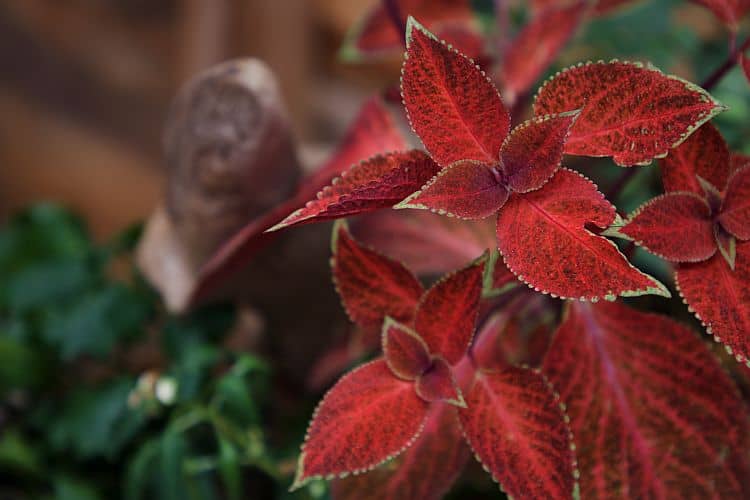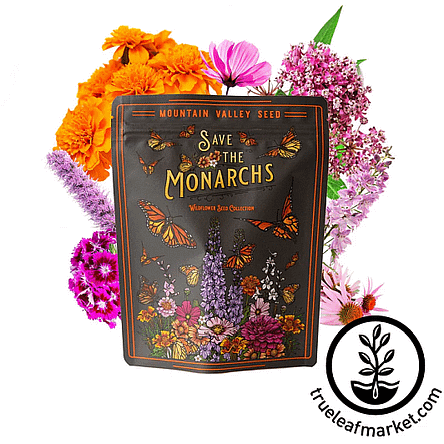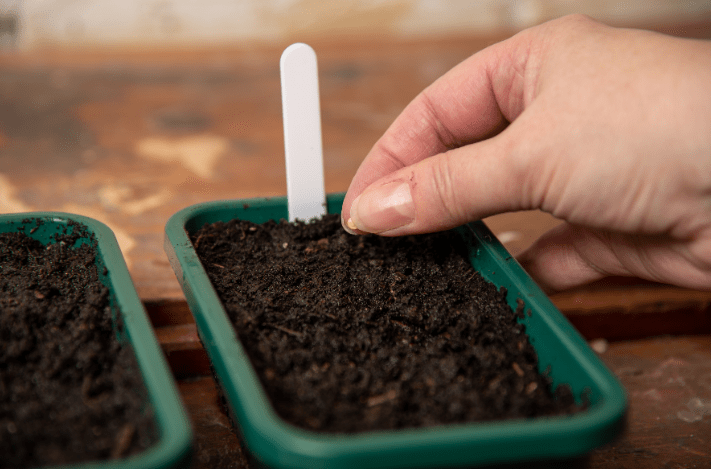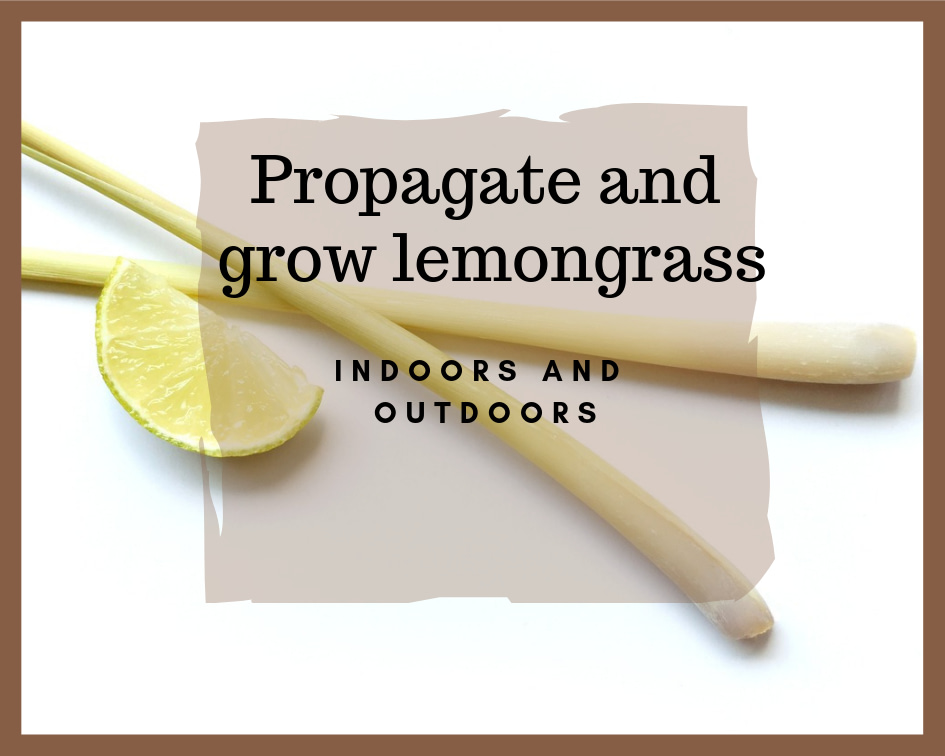This post may contain affiliate links. As an Amazon Associate we earn from qualifying purchases.
It’s so easy to propagate coleus. It’s truly the plant that can keep on giving!
Grown for its colorful foliage, coleus is a tropical plant that exhibits various growth forms, from tall and lanky to trailing. Foliage varies as well, with fringed, sword-leafed and oak-leafed forms.
Coleus thrives in shady garden spots or indoors, as a houseplant. Best of all, cuttings placed in a glass of water readily root and seeds germinate relatively easily.
Supplies you’ll need to propagate coleus from seed
Germination pot, cells or flat

How to grow coleus from seed
The first thing you need to know about coleus seeds is that most don’t come true from seed. So, when you see that package of gorgeous “Jazz Coleus” seeds online, don’t be disappointed if the plants you finally get from those seeds look nothing like the photo online.
This isn’t to say that you won’t enjoy whatever colors it offers, just that the chance you’ll get the variety named on the seed packet are slim.
Coleus seeds can be started indoors and, if provided the ideal conditions, can be germinated all year.
Under optimal conditions, coleus seeds germinate within 10 days. If you want to transplant them into the garden, start the seeds eight weeks before the last frost in your area.
Cooler temperatures and other problems may cause a longer germination period. Coleus seedlings are ready to transplant, either into the garden or into another container, eight weeks after they sprout.
The best type of soil in which to germinate coleus seeds is a soilless seed starter mix, either a commercial product or homemade.
To make your own, combine 4 parts of vermiculite, 3 parts of peat moss, 1 part perlite and 1 tablespoon of lime.
Whether commercial or homemade, the peat moss makes the mixture difficult to combine, so we typically pre-moisten it with warm water. Then, when you add it to the other ingredients, be sure to stir it in well.
The ideal soil temperature for germination is 70 degrees Fahrenheit. Use a heat mat, left running 16 hours a day, to provide heat if needed.
 Sowing the coleus seeds
Sowing the coleus seeds
Coleus seeds are so tiny and they require light to germinate. Sow the seeds on the surface of the planting medium and cover with a very thin — 1/8-inch or less — layer of sand or vermiculite.
If you don’t have an area that receives bright, indirect sunlight in your home, place the pot or flat holding the seeds under shop lights or grow lights for 16 hours a day.
If all else fails, place the germination container in a sunny window. I’ve often been successful with this method.
The other requirement for coleus germination is moisture. It is important to not overwater the seeds, but the soil should be kept moist at all times.
Growing on your coleus seedling
Once the coleus seeds germinate, you will need to water them carefully to avoid knocking them over. Bottom watering is one way to accomplish this.
Set the pot or tray in a pan of lukewarm water that reaches halfway up the side and allow it to sit until the top of the soil is wet.
Fertilize the seedlings for the first time with fish emulsion, diluted to half the strength recommended on the label, three weeks after they develop their second set of true leaves.
The first set of leaves you’ll see are not considered true leaves, but known as cotyledon. Learn more about true leaves in our post Gardening Terms for Beginning Seed Starters.
Allow your coleus seedlings to grow on, 2 inches under the lights to avoid burning the foliage, until you transplant them.
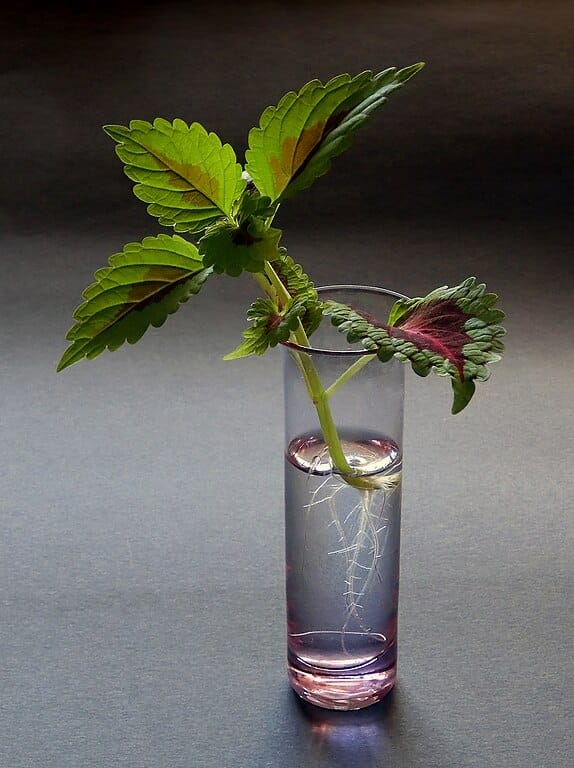
How to grow coleus from cuttings
Supplies you’ll need to propagate coleus from cuttings
Propagation container (or check these out! Great for shorter cuttings.)
Water
Growing coleus from cuttings is by far the easiest way to propagate the plant and ensure that the new plant will be identical to the mother plant.

Taking the coleus cutting
Use a sharp, sanitized pair of gardening snips to cut a 5-inch stem from the coleus plant. Ensure that you make the cut ½ inch below a node.
Remove all of the leaves from the stem with the exception of two at the top, and any flowers or buds. Cut the leaves in half if they’re overly large.
Fill a small glass or vase with enough water to cover the bottom half of the stem and stick the stem in the water. Pour out the water and add fresh water as often as possible, preferably at least every three days.
The cuttings should root readily and you’ll be able to plant them in a well-draining potting mix when the roots are at least two inches in length. I always wait until they are about four inches to ensure they can handle the transfer to soil.
Place the coleus in an area that receives bright but indirect light and don’t overwater it. If it appears to be wilting, it’s time to water.
There ya go! Coleus is one plant that can keep on giving!
Learn more about coleus and its care in our blog post The Best Houseplants for Beginners.
The American Society for the Prevention of Cruelty to Animals (ASPCA) warns that Coleus ampoinicus is “Toxic to Dogs, Toxic to Cats, Toxic to Horses.” While it isn’t deadly, it can cause “Vomiting, diarrhea, depression, anorexia, occasionally bloody diarrhea,” they warn.
They make no mention of any of the other species in the genus. To be safe, keep any coleus in a spot where the pets can’t reach it.
